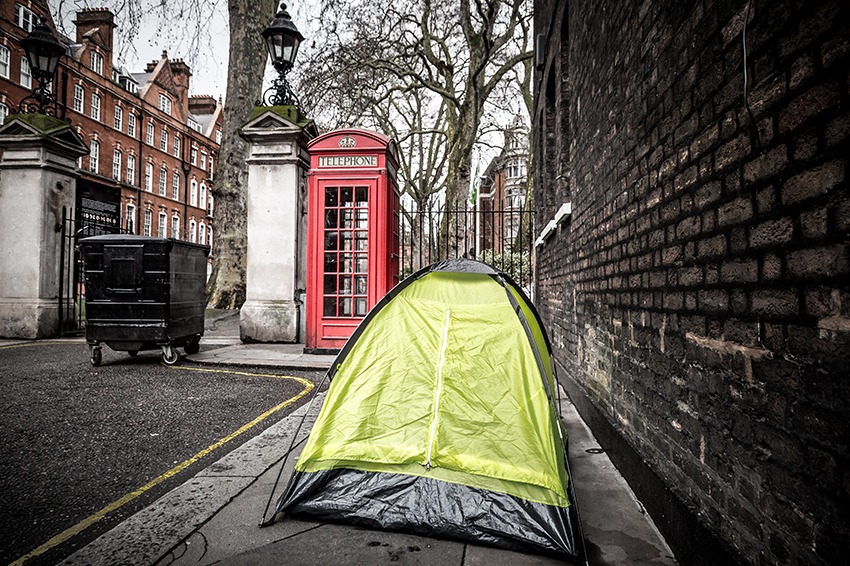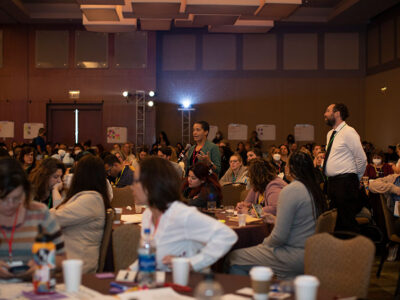Dame Louise is the leader that UK politicians of both parties have long turned to with the most complex social policy challenges. For Tony Blair’s government, she led the “Rough Sleepers Initiative” that reduced street homelessness by ⅔ over a three year period (1998-2001). Moving on to work on victim’s rights, families with multiple challenges, failures of the child welfare system and the radicalization of young Britons, Dame Louise had been recruited back to public service shortly before COVID-19 to advise the Boris Johnson government on homelessness. When the crisis hit, her message to Johnson’s government was clear: “get everyone in”. Working with local council governments, not for profits and hotel and property owners throughout England and Wales, every individual living on the streets was offered safe accommodation in vacant units, hotels and dormitories as the coronavirus loomed.
Dame Louise is now at work on a project of equally bold ambition: to find long-term homes for those now in the temporary accommodations. The UK Government has already committed 6,000 homes to that effort, accelerating multi-year housing budgets to free £433 million for current use and adding 50 million in new funding.
Dame Louise Casey and Community Solutions President Rosanne Haggerty discussed how this national effort came together and how it can serve as a model for the US and other nations for how to end street homelessness. The conversation has been edited for length.
Haggerty: Between 1998 and 2001, you stood up efforts to end rough sleeping in the UK in a measurable, time-bound way. You delivered a strategy that reduced rough sleeping by 2/3. What made that effort successful?
Casey: The cities had what you all call a by-name list of people experiencing homelessness. We knew who the most vulnerable were, we knew specifically who we had to get in, and we coordinated our work around those people. We knew the overall number of rough sleepers and counted regularly, because If you can’t count it you can’t define the problem. If you can’t define it, you don’t know who is experiencing it. By the time you get to that vulnerable person on a By-Name List, you know a lot about that person and what they need.
You were brought back to address homelessness as the pandemic was posing a grave risk to the homeless population in the United Kingdom. Your call to get everyone in, and efforts to make it happen for thousands of people, have been widely recognized. How did you generate the will to make that happen?
I took the available medical advice and turned it into a letter to every regional coordinator. I said our people are disproportionately more likely to die, and if you layer COVID-19 on that, we are on the brink of a crisis. We just said, let’s get this done and regroup after we’ve done it. At that point, the snowball was going down the hill. It had momentum and a clear message behind it: we need to safe harbor these people.
“The task here is to lift the safety net. Why do we have to let people get as far as the street to support them?
Dame Louise Casey
… We are seeing that if you want to do something, if you actually want to do it, it’s possible to do it.”
We’ve placed people in temporary accommodation, largely commercial hotels. The clever thing was to work out what redundant opportunities we had. I’m not sure how easy this would have been if we had to do this without empty property to move people into.
We should be properly humble about, but for now, let’s quietly say that there are tiny silver linings in this horrific dark cloud of COVID-19. One is that we come out the other side without people living on the street.
Where did the money come from?
We didn’t have any extra budget for it. We had to redirect the existing funding of the rough sleepers initiative. The Government has put 3.2 billion into local government overall COVID response, but that doesn’t always mean it will trickle down to the world of rough sleeping.
We got everyone in. Everyone wants them to stay in. But keeping everyone in is going to cost money, and that’s where we are now. That’s my job this week. We’re going to work with all those in hotels and treat them individually until we find permanent solutions. I’m not letting people go back to the streets. We’ve got to figure it out.
What built the will for this change?
We all know that COVID-19 can affect every single person. But there are differences here, our Black and minority communities are more likely to get COVID-19 and suffer the consequences. That’s about endemic poverty, the racial disparity of poverty.
When working with Tony Blair, it was obvious he came to this through a lens of equality and fairness. When working with David Cameron, it was about looking after vulnerable people in your society, because it’s the right thing do. You can get to the same place from either of those perspectives. But I think what has cut across all of this is COVID-19. Everyone is affected in some way, and it is inspiring people to be protective of other people. It is like that study which looked at what happens if you’re in a railway or carriage and you ask someone, hey, can you take a look after my bag? The person keeping their eye on that bag will do anything to secure it. They will get into a fight. They will do so much more than if it’s their own bag.
We have stood up for people who are more vulnerable and want desperately to do something for them. We are banding together in this time of difficulty. My question is how do you replace that in peacetime?
We’re hoping this is the moment of reckoning, that people will understand homelessness is not the problem, but a symptom of a broken social safety net and a crumbling civic and public health infrastructure. This should be the time to build the infrastructure that designs homelessness out of existence.
You’ve been saying this for years. It is not seeing homelessness as, or redefining it as a public health crisis. It is a public health crisis. Now it’s backed by 110% evidence. It’s been interesting.
The task here is to lift the safety net. Why do we have to let people get as far as the street to support them? It’s a crazy situation we’ve gotten ourselves into where we let people get sick and on the street before we assess them. Why don’t we take this moment to lift the safety net? We are seeing that if you want to do something, if you actually want to do it, it’s possible to do it.
We are hearing and sensing a growing demand across the world for a unified call to action to end homelessness — especially street homelessness. What would you say to the countries that are struggling with this, or haven’t yet stepped up to answer this call?
So much about this is attitude and deciding you want to protect vulnerable people. It’s determination, decision, and data. Are you really determined to do it? Have you decided to do it? And do you have the data to get it done? That goes across every city and continent in the world. That doesn’t matter whether it’s Little Rock or San Francisco, Sydney or Glasgow. It’s all about deciding what you are going to do, and just doing it.




